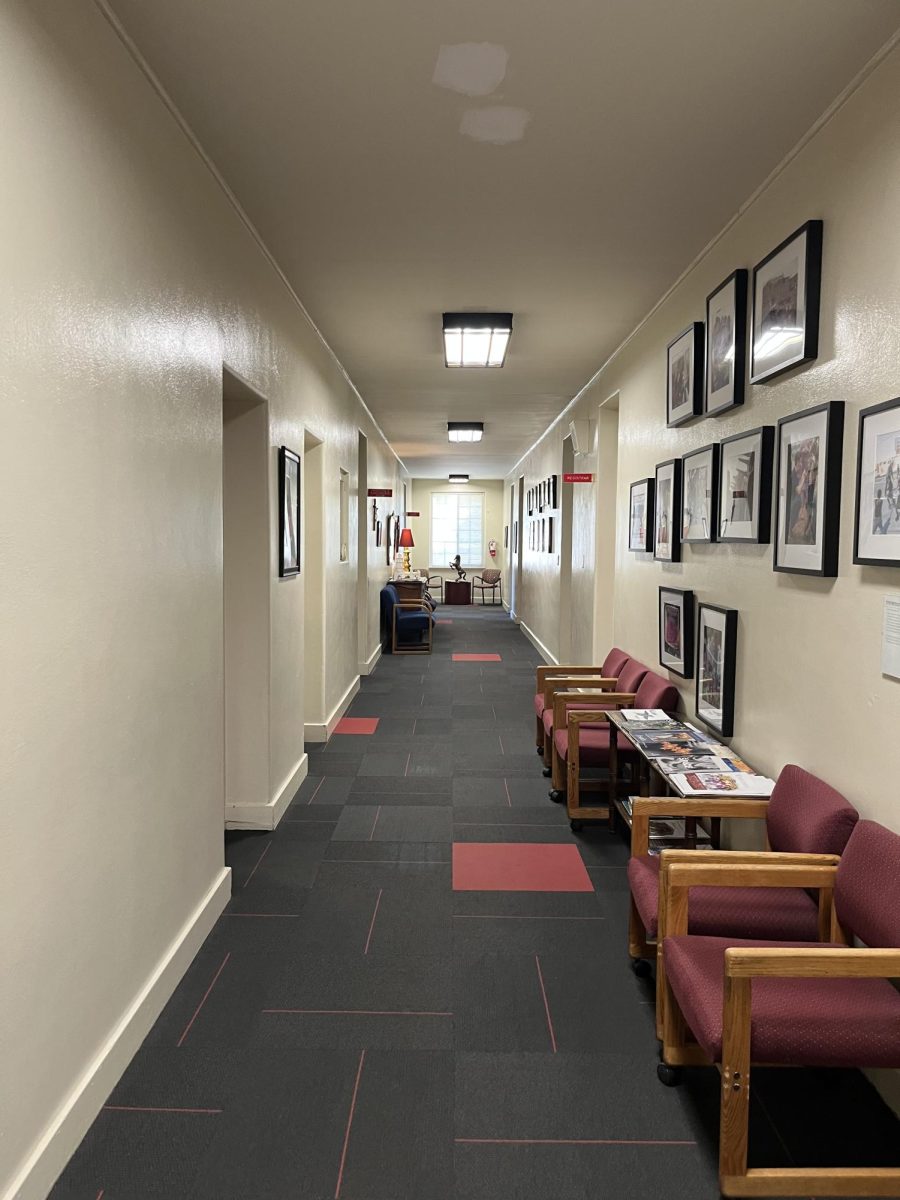By Eric Villanueva ’11
THE ROUNDUP

With his thumb, Cyrus Afkhami ’11 pushes up on the screen of his friend Jeff Pisauro’s ’11 iPhone 3GS and counts the number of texts Pisauro has received so far that day.
“One, two, three, four, five, six, seven, eight,” Afkhami counts as he scrolled on Pisauro’s phone. Pisauro grabs the phone back.
All eight texts were from one of five conversations Pisauro was having simultaneously at lunch.
By the end of the day, Pisauro said he will send and recieve about 150 texts and will spend about one hour texting, which falls in line with research on teen texting.
According to research by the Kaiser Family Foundation, in 2010 teens (ages 12-18) report spending on average one hour and 35 minutes daily sending and receiving texts.
Pisauro said he agreed with the numbers from the research, but added that teens who text more than an hour daily have a problem.
In truth, research and studies that have followed the dawn of the Internet, smartphones and social networking websites have suggested that teens have “a problem” with media usage.
Documentation shows an increased correlation between teen media usage and teen stress, especially now when 71 percent of all teens have a cell phone and 60 percent have a personal desktop or laptop computer, according to polls from the Pew Research Center.
“The media consumes all teens’ times, which doesn’t help teens out with relationships and school work,” said Mrs. Karen Parise, a Brophy guidance counselor. “It causes stress because it makes those things more difficult than they already are.”
A 2009 study published in The Proceedings of the National Academy of Sciences of college students showed media multitasking—when one e-mails, texts or uses several different media sources at once—while doing homework made students less efficient in completing homework and caused students to score poorly on tests.
According to research by the Kaiser Family Foundation, 54 percent of teens reported media multitasking at least “some” of the time while doing their homework. Thirty-one percent said they used other media while doing their homework “most” of the time.
Brophy students definitely fit into this majority, according to Pisauro, who stops to answer e-mail and texts while doing homework.
But Pisauro said answering texts during homework does not make him less efficient or cause added stress like the study suggests.
“I think it definitely slows down the process,” Pisauro said. “But, if anything, it takes (stress) away because I can escape for a couple seconds and then go back.”
The same 2009 study suggests decreased efficiency in completing homework because of media multitasking also leads to a lack of sleep, which causes added stress.
In addition, late nights playing video games, texting friends and surfing the Internet may also lead to learning problems, mood swings, anxiety and depression in teens, according to a U.S. News and Report Health News article from 2009.
Teens who were a part of the study received an average of 34 texts per night after they went to bed, occurring from 10 minutes to four hours after going to bed. The average participant was awoken once a night by a text.
Mrs. Parise said she sees Brophy students who have sleeping troubles, which she attributes to media devices.
“A lot of time when kids are having trouble sleeping I tell them to get away from the computer, to turn off their cell phone at night and give themselves time to read, time for their brain to relax,” Mrs. Parise said.
According to Mrs. Parise, sleep is critical because rest and schoolwork are correlated.
However, Pisauro said though he estimates his media usage subtracts an hour from his usual sleep, it does not influence his sleep cycle as much as participating on the school’s crew team.
It is when texting late at night couples with crew that the lack of sleep becomes noticeable, he said.
Mrs. Parise said what works best for teens to de-stress is clearing away distractions and “stepping away from the media completely” when doing homework.
Studying in 20-minute intervals at a time, which is as long as one can typically stay focused on a task, and then taking a 20-minute “media break,” helps students to remain concentrated and efficient in completing homework, Mrs. Parise said.
“Stepping away from the media, stepping outside, spending time with your family, even for short amounts of time, is important,” she said.
Pisauro said he knows that taking breaks to use media in between homework is beneficial from personal experience.
In the evening after crew practice, Pisauro sits in his room, opens his computer and does his homework.
From time to time, Pisauro’s cell phone vibrates on the desk beside him.
He finishes his math problem and then picks up the phone.
“When I’m doing math homework, I’ll finish one math problem, answer a text message and then go back to math,” he said.
Related Links
News
Stress unavoidable for busy students
Tablets, technology add new element to teen stress
Brophy breeds workaholics, perfectionists to certain degree
Students face stress at home, conflicts with school work
Final exams necessary to achieve college prep education
Opinions
Technology adds to stress, boundaries need to be set
Academic competition stifles students’ classroom potential
Advanced classes causing unnecessary stress for students
Sports
Ever-growing competition raises stress level among student athletes
Media disconcerts teens and self-image
By Eric Villanueva ’11
The RoundupRecent studies show that media, especially Internet and TV, do not only cause teens stress by keeping teens up late or lowering their grades, but actually endangers their emotional health.
According to a U.S. News and Report Health News article from 2010, the risk of becoming depressed was 2.5 times higher among teens who were addicted to the internet than those who weren’t.
With polls by the Pew Research Center showing 93 percent of teens (age 12-17) use the Internet, teen depression may be on the rise and Brophy student may be most at risk.
Tallying the numbers, Brophy students, assuming students use laptops in all their classes for the entire periods, at lunch and at break, spend six hours and 40 minutes daily on their computers, where they have access to the Internet.
Of course this estimate accounts for only the time students spend at school. Students also open their computers at home to do homework in the evening after school.
But, not all media teens view online or on TV is bad, according to Mrs. Karen Parise, Brophy guidance counselor.
“There’s value in media,” Mrs. Parise said. “There is some good media and some bad media, and it’s all about balance.”
Mrs. Parise said that bad media is especially harmful for teens because it promotes violence and builds up false images of the perfect body and perfect family.
Research shows in recent years that “bad media” has had an impact on teens.
According to “Pew Internet and American Life Project” by the Pew Research Center, 28 percent of teens look online for health, fitness or dieting information and 22 percent go online to search for information about drug use, sexual health or depression.
However, avid media-user Jeff Pisauro ’11 said he doesn’t believe depression is linked to media usage.
“I think (media usage) makes things easier because it’s both a way to escape and connect with your friends,” Pisauro said. “My escape is music.”
But he said he does agree that media, especially TV and the Internet, impacts how teen see themselves because it is “a big part of our world.”








